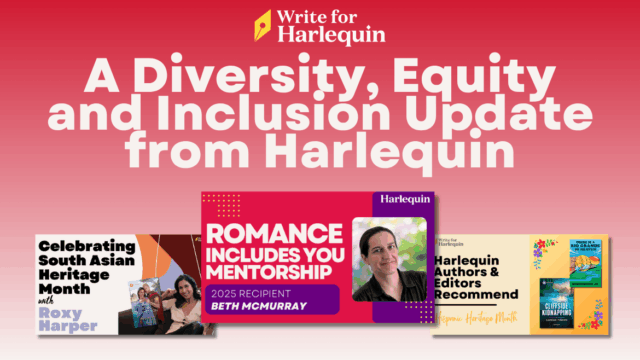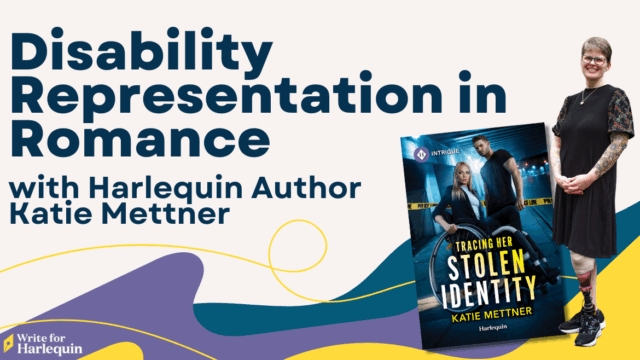
One of the best things about working at Harlequin is that we work with authors, not just lines (though editors do have primary allegiances to their home line). Here’s how one talented author–Elizabeth Lane–went from Historicals to Desire–and manages to balance both!
Tumbling Through Time
For most of my thirty-five year writing career I never thought of myself as anything but a historical author. I loved journeying into the past with its epic scenes, fascinating lifestyles and characters, some of them real. Writing historical romance allowed me to use those past settings as a canvas for weaving my stories. I needed that canvas. Now, looking back, I realized that I depended on it—not a bad thing, it was just the way I worked.
 That canvas was jerked away when the Harlequin Historical editors told me they were overbooked and I’d be better to write contemporaries until they had more openings. No petticoats and cravats, no epic wars, no bandits, no wilderness outposts—just a hero and heroine falling in love in a modern setting. Once I got used to the idea it wasn’t so bad. I wrote three contemporaries for the Silhouette lines—good books that are still selling. But I never felt that contemporaries were “me.” When my new agent sold another historical and I was welcomed back with open arms, it was like coming home. The new historical was a western, and that turned out to be what my editors wanted from me. Having grown up in the rural West, it was a natural setting, and an easy one for me to write.
That canvas was jerked away when the Harlequin Historical editors told me they were overbooked and I’d be better to write contemporaries until they had more openings. No petticoats and cravats, no epic wars, no bandits, no wilderness outposts—just a hero and heroine falling in love in a modern setting. Once I got used to the idea it wasn’t so bad. I wrote three contemporaries for the Silhouette lines—good books that are still selling. But I never felt that contemporaries were “me.” When my new agent sold another historical and I was welcomed back with open arms, it was like coming home. The new historical was a western, and that turned out to be what my editors wanted from me. Having grown up in the rural West, it was a natural setting, and an easy one for me to write.
Fast forward a couple of decades. I was burning out and feeling the need to do something very different. That was when I decided to try and break in to the Harlequin Desire line. It took a lot of trying—and a discouraging number of rejections. I owe a huge debt to my editor, Elizabeth Mazer, whose guidance and support finally made it happen and to Desire senior editor Stacy Boyd who was willing to give me a chance.
Last year, after writing thirty-four historical novels and novellas, I finished my first book for Harlequin Desire. I was sweating bullets all the way. And my respect for authors who write contemporaries has grown by giant leaps. I now have four Desire books in print and two more under contract. And I’ve learned a lot about the craft of writing in the process. Here’s the takeaway for you.
A well written historical romance transports the reader to a different time and place. It allows her to experience the richness of setting and historic detail—the costumes, the food, the language, the social customs, the epic risks, the larger-than-life characters and emotions. It’s a different world created by research and imagination on the part of the author.
A story for a contemporary line like Desire takes place in the real world. Its plot is bare bones—a hero, a heroine, a compelling situation and lots of sizzle. No arch-villain, no historic setting, no grave physical danger, spilled blood, chases, races, or cliffhangers. Just the intense, evolving relationship between a man and a woman.
The strength of a contemporary setting is its reality—and way that reality resonates with your reader. She can only imagine what it’s like to be kidnapped by Vikings or dance at a fancy ball. But she knows how it feels to wait in a hospital for news of a loved one, how it feels to be stuck in traffic on the way to an urgent meeting, or how it feels when the phone rings and it’s him. It’s that gut connection that makes any story—especially a contemporary one—so compelling.
 I love hearing from readers. You can contact me, and learn more about my books, on my web site: https://www.elizabethlaneauthor.com.
I love hearing from readers. You can contact me, and learn more about my books, on my web site: https://www.elizabethlaneauthor.com.
Elizabeth’s latest Desire is out right now. She certainly seems to have gotten the Desire tone right according to the cover! 🙂 Good luck continuing to straddle the line, Elizabeth–we’re looking forward to seeing you keep the balance.





